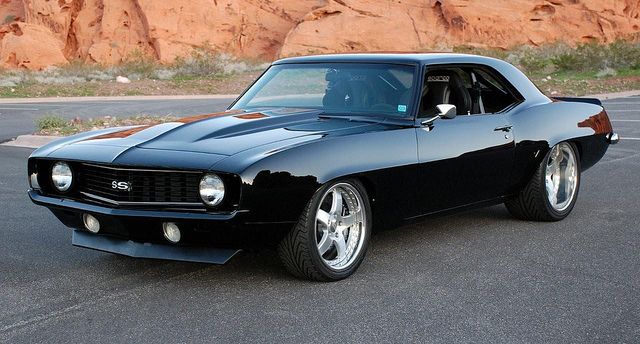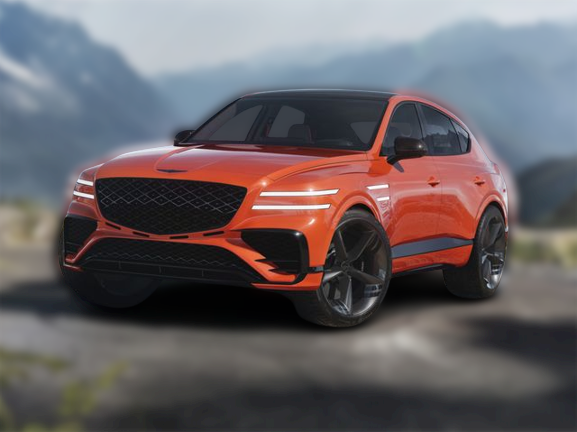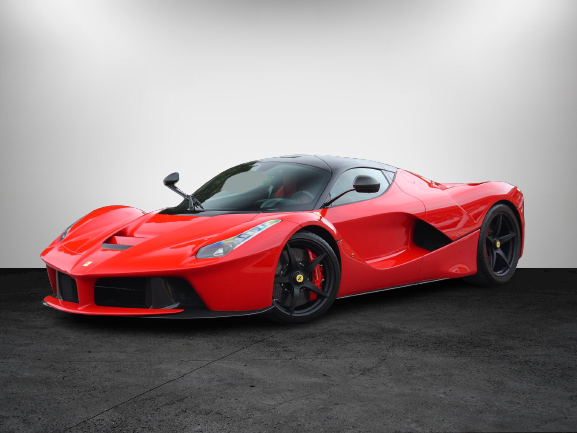I can only imagine how shaken up the executives at GM where when the Mustang was released. While the American sports car likely received a fair share of an uncontested market share for a fast muscle car, that ended in 1967 when Chevrolet released its answer to the Ford Mustang: The Chevrolet Camaro.
According to the company, the Camaro was named after the French word for comrade. The original Camaro line featured a unibody structure from the windshield and firewall back with a separate steel rail sub-frame for the front.
From the beginning, the Camaro was available in a hardtop coupe and convertible body styles. It could also be order with nearly 80 factory options and 40 dealer accessories. These options included three main packages and a choice of four different engines. Not bad considering these were the first muscle cars by the brand.

First Generation Camaro
The 1969 Camaro is the last of the first generation Camaros, and is arguably the most popular version. This particular version carried over the previous year’s major mechanical components and drive-train. However, it featured all-new sheet metal except for the hood and trunk lid.
This new edition gave the car a far sportier look. The grille of the 1969 version was redesigned with a “V” cant and deeply inset headlights. Along with these additions, the 1969 version offered new door skins, rear valance panel and rear quarter panels. These editions gave the car a much lower, wide and far more aggressive look. It is important to note that these particular styling additions were only available for the 1969 model year versions. This set the 1969 version apart from the other first generation Camaros.
The 1969 model year is notable because it was exceptionally long, extending into November 1969 because of manufacturing problems that delayed the introduction of the second generation model planned for 1970.
First Generation Engine Specifications
We all know and love the 350 engine that Chevy continues to produce. You can usually find parts for them, and they produce a lot of horsepower and torque for the money. The 350 wasn’t the only engine that the manufacturer produced for this model year. smaller sized options and big block engines were also available at great deals.
During the production of the original generation of Camaros there were a number of different engines used in different model years and types. These engine types may have included one of the following engine types for a 1969 Camaro:
1967–1969 L26 230 cu in (3.8 L) I6 140 hp (104 kW)
1967–1969 L22 250 cu in (4.1 L) I6 155 hp (116 kW) at 4200 rpm, 235 lb⋅ft (319 N⋅m) at 1600 rpm
1967–1969 Z28 302 cu in (4.9 L) V8 290 hp (216 kW) (rated) 350 hp (261 kW) actual
1967–1969 LF7 327 cu in (5.4 L) V8 210 hp (157 kW)
1967–1968 L30 327 cu in (5.4 L) V8 275 hp (205 kW)
1969 L14 307 cu in (5.0 L) V8 200 hp (168 kW)
1969 LM1 & L65 350 cu in (5.7 L) V8 255 hp (190 kW) and 250 hp (186 kW)
1967–1969 L48 SS350 350 cu in (5.7 L) V8 295 hp (220 kW) (1969 300 hp (224 kW)) at 4800 rpm, 380 lb⋅ft (515 N⋅m) at 3200 rpm
1967–1969 L35 SS396 396 cu in (6.5 L) V8 325 hp (242 kW) at 4800 rpm, 410 lb⋅ft (556 N⋅m) at 3200 rpm
1968–1969 L34 SS396 396 cu in (6.5 L) V8 350 hp (261 kW) at 5200 rpm, 415 lb⋅ft (563 N⋅m) at 3200 rpm
1967–1969 L78 SS396 396 cu in (6.5 L) V8 375 hp (280 kW) at 5600 rpm, 415 lb⋅ft (563 N⋅m) at 3600 rpm
1968–1969 L89 aluminum cylinder head option for the L78 SS396/375 engine—lightened the engine by ~100 lb (45 kg).
1969 COPO 9561/L72 427 cu in (7.0 L) V8 425 hp (317 kW) at 5600 rpm, 460 lb⋅ft (624 N⋅m) at 4000 rpm
1969 COPO 9560/ZL1 427 cu in (7.0 L) V8 430 hp (321 kW) at 5200 rpm, 450 lb⋅ft (610 N⋅m) at 4400 rpm
The SS Model
While there are a number of different Chevrolet models such as the Rally SPorts, Yanko, and a few other honorable mentions, the Super Sport (SS) continues to be a prized possession and for good reason. The SS model was known as “The One with a Name Like the Hiss of a Snake.” It offered big power, a special 3-speed transmission, sport striping and a heavy insulated hood. The specialized SS performance package consisted of a 350 or 396 cu in V8 engine as well as chassis upgrades for better handling and to deal with the additional power of the engine. The SS also featured non-functional air inlets on the hood, special striping, and the specialized SS badging.
The ’69 Camaro and Racing
The 1960 Chevrolet Camaros SS was a great option for racing and a popular four-seat sportster option. Throughout the racing season, the ’69 Camaro was at the head of the pack nearly everywhere. The Z28 model won a Trans-Am racing championship while the specially detailed RS/SS 396 Convertible paced the 1969 Indy 500. The 1969 Camaro was never just another car.
When Car Life magazine tested a Camaro SS-350 it completed the quarter-mile in 15.8 seconds at 89 mph. Motor Trend reported that the Camaro SS-350 did the same track in 15.4 seconds at 90 mph.
The Iconic ’69 Camaro
The second generation Camaros were produced for another 12 years following the success of the first generation. Even today, the spirit of the now iconic ’69 Camaro is evident in new Camaros. With its unique and sporty design, upgraded racing-style features and an iconic look, the 1969 Camaro SS is a highly prized option for any car enthusiast.
How Much Is a 69 Camaro SS Worth?
When looking at a classic ’69 with a 305 engine the starting prices is about 25,000. Pristine versions will start around 45,000 and can go much higher. More rare models can quickly go into the six digit range.
What Makes an SS?
If you’re wondering if you have an SS there is a simple way of checking. A 1967 Camaro has a code that you can find on the trim tag. If you own a late model there is an “X” code. One exception is the X11 code, which can also mean a plain Camaro.








